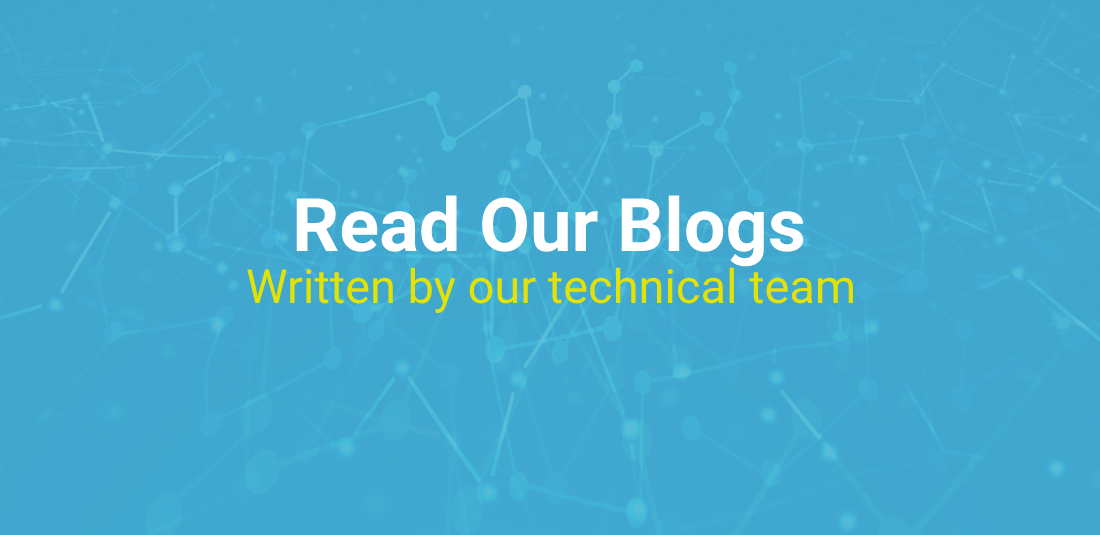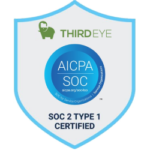Blogs or Expert Columns
Responsible AI in Practice: Resume Matching
Responsible AI in Practice: Resume Matching Steve Cooper Head of Enterprise Data and Analytics Program at Amazon Web Services (AWS) Bias in algorithms is a big topic… it’s a necessary conversation and, as with most important matters, exhibits the full range of emotion and perspectives. The business press and mainstream media presents a consistent, albeit limited, view of the challenge. The Economist notes it as a mega-trend for 2019. It defines “algorithmic bias” as “the worry that when systems are trained using historical data, they will learn and perpetuate the existing biases. To ensure fairness, AI systems need to be better at explaining [...]
ThirdEye Data named by Clutch as a 2019 Top AI Company
ThirdEye Data named by Clutch as a 2019 Top AI Company Since 2010 we’ve helped organizations transform knowledge into strategic and tactical insights for projects involving data science, analytics, and engineering services. Our team has successfully leveraged artificial intelligence and machine learning for big data consulting projects. Through our efforts, we’ve been recognized as a leading company in Clutch’s 2019 report, specifically as one of the top machine learning companies and artificial intelligence companies in San Francisco. Clutch is a B2B ratings and reviews company based in the heart of Washington DC committed to connecting businesses of all [...]
Helping the Little Guy: The Power of Open Source Software for Startups
Helping the Little Guy: The Power of Open Source Software for Startups BY DJ DAS ON FEBRUARY 28, 2019 It’s no secret that open source software holds many benefits for businesses looking to reap the rewards of these innovative, collaborative and incidentally free efforts of developers around the world. Even major companies such as Salesforce have opened up their software for developers to test, debug and improve. Other huge players that run on open source software include Netflix and Twitter. In fact, 78 percent of companies run on open source. So, what if I told you these benefits improve exponentially for startups using OSS to launch and scale their [...]
Should your company be open to open sourcing its software?
Should your company be open to open sourcing its software? Developing software can be a long, expensive process for a company, yet there are many advantages to open sourcing, which may seem counterintuitive at first. For Salesforce, sharing means a lot more than caring. In fact, last year, Salesforce announced that it was open sourcing the machine learning technology behind its Einstein AI platform. “Three years ago when we set out to build machine learning capabilities into the Salesforce platform, we learned that building enterprise-scale machine learning systems is even harder,” stated Shubha Nabar, senior director of data science on the Salesforce Einstein team, [...]
ThirdEye Data named as one of the Top Cloud Application Development Companies for 2019
ThirdEye Data named as one of the Top Cloud Application Development Companies for 2019 The businesses integrate cloud computing technology and Big Data Analytics more extensively today to optimize the use of available data in a more profitable manner. Now you can also find the leading Big Data Analytics Service Providers on TopDevelopers. TopDevelopers has finely assessed the capabilities and services of the companies which can help in the growth of businesses and enterprises. Cloud adoption is one of the game-changing trends that the business firms are adopting for its innumerable benefit in terms of, resource management, increased productivity, security, sourcing information, [...]
This AI is so good at writing that its creators won’t let you use it
This AI is so good at writing that its creators won't let you use it By Rachel Metz, CNN Business Updated 2217 GMT (0617 HKT) February 18, 2019 San Francisco (CNN Business)A new artificial intelligence system is so good at composing text that the researchers behind it said they won't release it for fear of how it could be misused. Created by nonprofit AI research company OpenAI (whose backers include Tesla CEO Elon Musk and Microsoft), the text-generating system can write page-long responses to prompts, mimicking everything from fantasy prose to fake celebrity news stories and homework assignments. It builds on an earlier [...]
Domino’s doles out loyalty points for all pizza — including competitors’ — with help of AI
Domino's doles out loyalty points for all pizza — including competitors' — with help of AI Dive Brief: Domino's is launching a loyalty promotion on Feb. 2 that lets consumers redeem points for any pizzas they eat, including those served by competitors, the company announced in a news release. Those interested in participating can download the Domino's app and sign up for a Piece of the Pie Rewards program, which has integrated a new pizza identification feature. The artificial intelligence-powered software, developed internally at Domino's, scans images of pizza and will award points to users through April 28. After 60 points [...]
AI for Businesses Sake – How ThirdEye Data plans to do it
AI for Businesses Sake – How ThirdEye Data plans to do it Big data can be an elusive and complex topic that is quickly becoming ubiquitous in today’s startup world. Quite simply big data refers to a wide range of hardware, software, and services required for processing and analyzing enterprise data that is too large for traditional data processing tools to manage. Dj Das, Founder and CEO of ThirdEye Data However, for the many companies that offer big data services, understanding how they work and what they do can be a little more complex. To understand more about big data services, we [...]
Moving Artificial Intelligence From Pockets Of Brilliance To Mass Industrialization
Moving Artificial Intelligence From Pockets Of Brilliance To Mass Industrialization Joe McKendrick Contributor AI & Big Data I track how technology innovations move markets and careers We've moved past the pilot and experimental stage of artificial intelligence, and for it to succeed in the enterprise, it needs to be industrialized -- capable of delivering results on a large scale. That's the word from Hilary Mason, general manager for machine learning at Cloudera, speaking at the recent AI Summit in New York. (Forbes was a media partner to the event.) The process of "industrializing AI is by taking the value we've proven [...]
The 25 Best Data Visualizations of 2018
The 25 Best Data Visualizations of 2018 The art of making data beautiful is taking the world by storm. Data visualization experts and artists are creating amazing things in the world of data design every single day. Data visualization is not a new phenomenon. Even before it was “cool,” data visualization was an important tool for visualizing data in many different fields. Technically speaking, data visualization encompasses all things data art, infographics, and data dashboards. The range of creativity truly is endless, and we are excited to see how it will keep progressing. What has happened over the last [...]
Computer, respond to this email.
Computer, respond to this email. Posted by Greg Corrado*, Senior Research Scientist Machine Intelligence for You What I love about working at Google is the opportunity to harness cutting-edge machine intelligence for users’ benefit. Two recent Research Blog posts talked about how we’ve used machine learning in the form of deep neural networks to improve voice search and YouTube thumbnails. Today we can share something even wilder -- Smart Reply, a deep neural network that writes email. I get a lot of email, and I often peek at it on the go with my phone. But replying to email on mobile is a real [...]
MRNet: Deep-learning-assisted diagnosis for knee magnetic resonance imaging
MRNet: Deep-learning-assisted diagnosis for knee magnetic resonance imaging Nicholas Bien *, Pranav Rajpurkar *, Robyn L. Ball, Jeremy Irvin, Allison Park, Erik Jones, Michael Bereket, Bhavik N. Patel, Kristen W. Yeom, Katie Shpanskaya, Safwan Halabi, Evan Zucker, Gary Fanton, Derek F. Amanatullah, Christopher F. Beaulieu, Geoffrey M. Riley, Russell J. Stewart, Francis G. Blankenberg, David B. Larson, Ricky H. Jones, Curtis P. Langlotz, Andrew Y. Ng†, Matthew P. Lungren† We developed an algorithm to predict abnormalities in knee MRI exams, and measured the clinical utility of providing the algorithm’s predictions to radiologists and surgeons during interpretation. Magnetic resonance (MR) [...]
Stacking models for improved predictions: A case study for housing prices
If you have ever competed in a Kaggle competition, you are probably familiar with the use of combining different predictive models for improved accuracy which will creep your score up in the leader board. While it is widely used, there are only a few resources that I am aware of where a clear description is available (One that I know of is here, and there is also a caret package extension for it). Therefore, I will try to workout a simple example here to illustrate how different models can be combined. The example I have chosen is the House Prices competition from Kaggle. This is [...]
Discovery of independently controllable features through autonomous goal setting
Discovery of independently controllable features through autonomous goal setting This blog post is accompanied with a colab notebook 34 Despite recent breakthroughs in artificial intelligence, machine learning agents remain limited to tasks predefined by human engineers. The autonomous and simultaneous discovery and learning of many-tasks in an open world remains very challenging for reinforcement learning algorithms. In this blog post we explore recent advances in developmental learning to tackle the problems of autonomous exploration and learning. Consider a robot like the one depicted on the first picture. In this environment it can do many things: it can move its arms around, [...]
Artificial intelligence tracks biological age at every level and rewinds the aging clock
Artificial intelligence tracks biological age at every level and rewinds the aging clock Insilico Medicine publishes a new paper presenting the latest advances in artificial intelligence for aging research INSILICO MEDICINE, INC. Monday, December 3, Rockville, MD - Insilico Medicine, one of the leaders in artificial intelligence for drug discovery, biomarker development, digital medicine, and aging research announced today the publication of its recent paper titled "Artificial Intelligence for Aging and Longevity Research: Recent Advances and Perspectives" in Ageing Research Reviews, one of the highest-impact journals in the field. The paper introduces recent advances in deep learning for aging research and [...]
BI EVOLUTION: INCREMENTAL DATA REFRESH
BI EVOLUTION: INCREMENTAL DATA REFRESH Posted on December 27, 2018 by Josh Caplan As Power BI grows to become a superset of Analysis Services functionality, a lot of that functionality will evolve as it becomes available. Incremental data refresh is a great example of how Power BI is modernizing/simplifying complex BI implementations. Incremental data refresh is the process of incrementally loading new or changed data to a BI model without needing to reload the full set of data. This can have the following benefits: Refreshes are faster since you don’t need to load all the data every time and more can be done [...]
A new era of computing is coming. How can we make sure it is sustainable?
A new era of computing is coming. How can we make sure it is sustainable? Sustaining the growth predicted by Moore's Law has required vast spending, investment and collaboration Image: REUTERS/Mike Blake Eighty years ago, Alan Turing laid down the mathematical basis of computation. Just a decade later, John von Neumann made computing practical. Advances in information technology since then have been fundamental to global economic growth, fuelled by a collection of critical core technologies for which we have been able to engineer exponentially increasing performance at exponentially decreasing costs. A memory chip in a modern cellphone has a [...]
Lawyer-Bots Are Shaking Up Jobs
Lawyer-Bots Are Shaking Up Jobs AI is augmenting and automating the tasks currently performed by hundreds of thousands of people in the U.S. alone. by Erin Winick December 12, 2017 Meticulous research, deep study of case law, and intricate argument-building—lawyers have used similar methods to ply their trade for hundreds of years. But they’d better watch out, because artificial intelligence is moving in on the field. As of 2016, there were over 1,300,000 licensed lawyers and 200,000 paralegals in the U.S. Consultancy group McKinsey estimates that 22 percent of a lawyer’s job and 35 percent of a law clerk’s job [...]
Why Every Data Scientist Needs A Data Engineer
This article was written by Lauren Brunk. The data scientist was deemed the “sexiest job of the 21st century.” The Harvard Business Review reasons that this “hybrid of data hacker, analyst, communicator and trusted adviser” is a rare combination of skills, worth a high paycheck. Too good to be true? Yes, according to Forbes. Turns out, data scientists spend most of their time (up to 79%!) on the part of their job they hate most. The Demand for Data Scientists: Thousands of companies across a myriad of industries are hiring data scientists, likened to the "quants" of Wall Street in the 1980s [...]
Best NLP Model Ever? Google BERT Sets New Standards in 11 Language Tasks
Best NLP Model Ever? Google BERT Sets New Standards in 11 Language Tasks The new Google AI paper BERT: Pre-training of Deep Bidirectional Transformers for Language Understanding is receiving accolades from across the machine learning community. Google researchers present a deep bidirectional Transformer model that redefines the state of the art for 11 natural language processing tasks, even surpassing human performance in the challenging area of question answering. Some highlights from the paper: NLP researchers are exploiting today’s large amount of available language data and maturing transfer learning techniques to develop novel pre-training approaches. They first train a model architecture on one [...]
Taking a practical approach to BigQuery cost monitoring
Taking a practical approach to BigQuery cost monitoring Marco Tranquillin Cloud Consultant, Professional Services Google BigQuery is a serverless enterprise data warehouse tool that’s designed for scalability. We built BigQuery to be highly scalable and let you focus on data analysis without having to take care of the underlying infrastructure. We know BigQuery users like its capability to query petabyte-scale datasets without the need to provision anything. You just upload the data and start playing with it. BigQuery comes with two different pricing models: The on-demand model, where users are charged for the amount of TB of data to be processed [...]
Kroger, Microsoft Create Futuristic Grocery Store. Amazon, Take Note
Kroger, Microsoft Create Futuristic Grocery Store. Amazon, Take Note The supermarket chain and technology giant are using the cloud to make it faster to navigate the grocery aisles and pick up online orders. Kroger Co. and Microsoft Corp. are joining forces to bring the ease of online shopping to brick-and-mortar grocery stores. Kroger, America’s biggest supermarket chain, has remodeled two stores to test out the new features, which include “digital shelves” that can show ads and change prices on the fly along with a network of sensors that keep track of products and help speed shoppers through the aisles. Kroger could eventually roll out the [...]
Data Science and the Art of Persuasion
Data Science and the Art of Persuasion Data science is growing up fast. Over the past five years companies have invested billions to get the most-talented data scientists to set up shop, amass zettabytes of material, and run it through their deduction machines to find signals in the unfathomable volume of noise. It’s working—to a point. Data has begun to change our relationship to fields as varied as language translation, retail, health care, and basketball. But despite the success stories, many companies aren’t getting the value they could from data science. Even well-run operations that generate strong analysis fail to capitalize on their insights. [...]
Recurrent Neural Networks cheatsheet
Recurrent Neural Networks cheatsheet By Afshine Amidi and Shervine Amidi Overview Architecture of a traditional RNN ― Recurrent neural networks, also known as RNNs, are a class of neural networks that allow previous outputs to be used as inputs while having hidden states. They are typically as follows: For each timestep tt, the activation a<t>a<t> and the output y<t>y<t> are expressed as follows: a<t>=g1(Waaa<t−1>+Waxx<t>+ba)andy<t>=g2(Wyaa<t>+by)a<t>=g1(Waaa<t−1>+Waxx<t>+ba)andy<t>=g2(Wyaa<t>+by) where Wax,Waa,Wya,ba,byWax,Waa,Wya,ba,by are coefficients that are shared temporally and g1,g2g1,g2 activation functions. The pros and cons of a typical RNN architecture are summed up in the table below: Advantages Drawbacks • Possibility of processing input of any length • Model size not increasing with size of input • [...]





